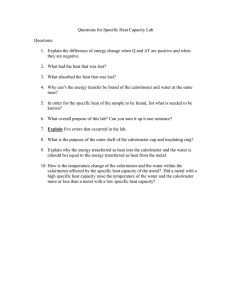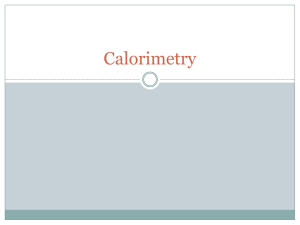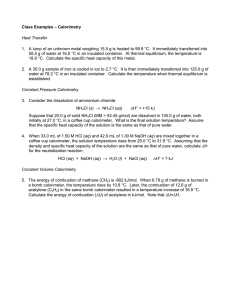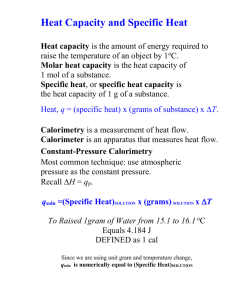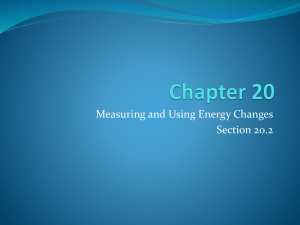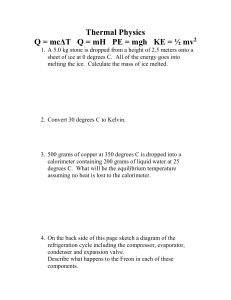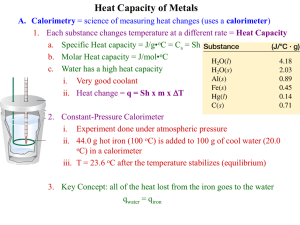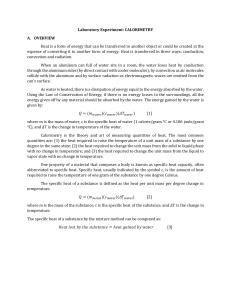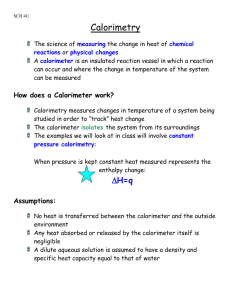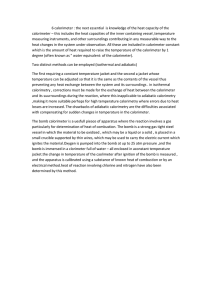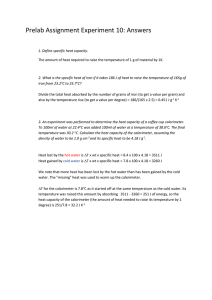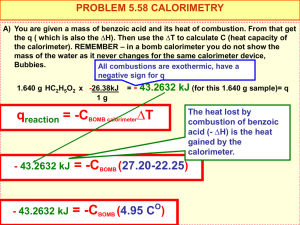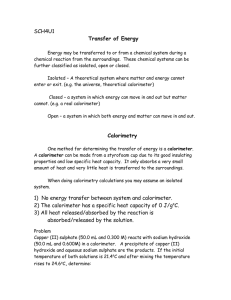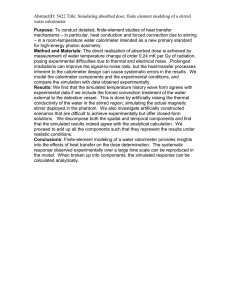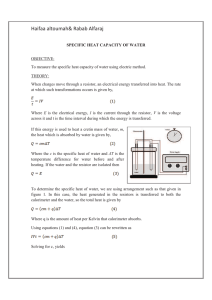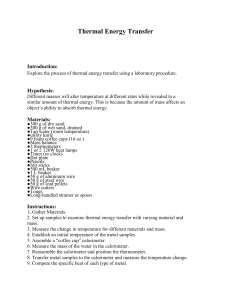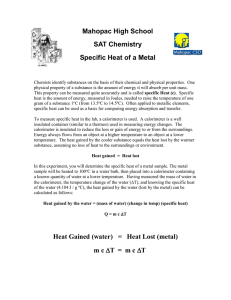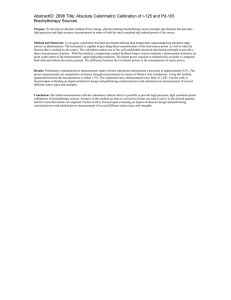CHAPTER FIVE Calorimetry 5.1
advertisement
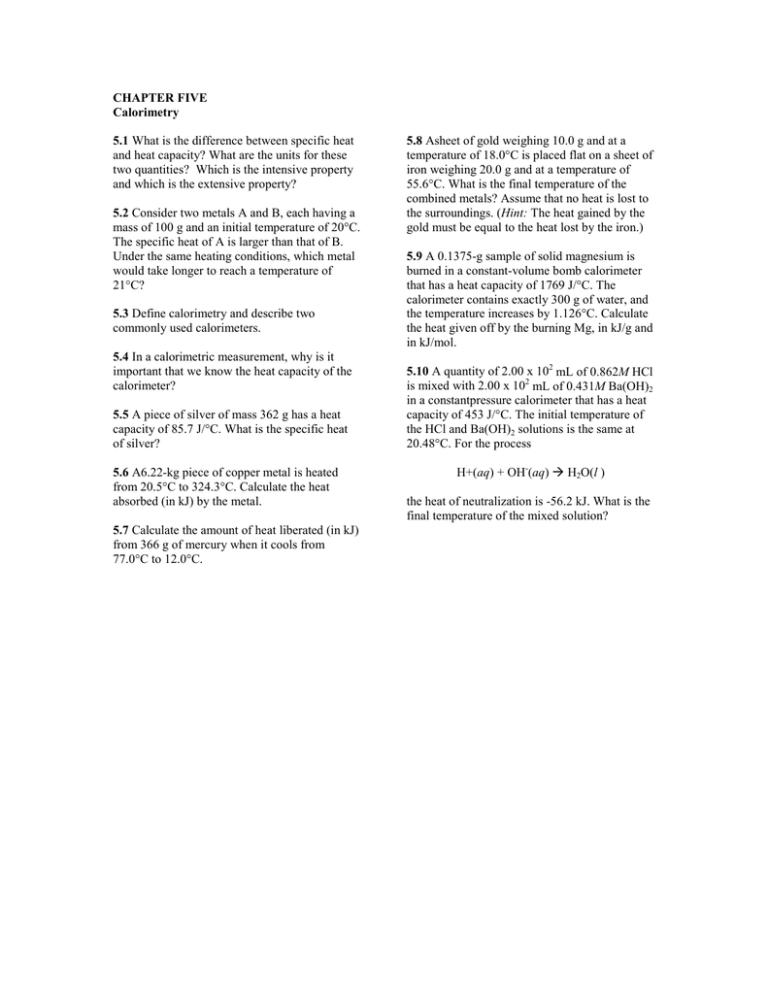
CHAPTER FIVE Calorimetry 5.1 What is the difference between specific heat and heat capacity? What are the units for these two quantities? Which is the intensive property and which is the extensive property? 5.2 Consider two metals A and B, each having a mass of 100 g and an initial temperature of 20°C. The specific heat of A is larger than that of B. Under the same heating conditions, which metal would take longer to reach a temperature of 21°C? 5.3 Define calorimetry and describe two commonly used calorimeters. 5.4 In a calorimetric measurement, why is it important that we know the heat capacity of the calorimeter? 5.5 A piece of silver of mass 362 g has a heat capacity of 85.7 J/°C. What is the specific heat of silver? 5.6 A6.22-kg piece of copper metal is heated from 20.5°C to 324.3°C. Calculate the heat absorbed (in kJ) by the metal. 5.7 Calculate the amount of heat liberated (in kJ) from 366 g of mercury when it cools from 77.0°C to 12.0°C. 5.8 Asheet of gold weighing 10.0 g and at a temperature of 18.0°C is placed flat on a sheet of iron weighing 20.0 g and at a temperature of 55.6°C. What is the final temperature of the combined metals? Assume that no heat is lost to the surroundings. (Hint: The heat gained by the gold must be equal to the heat lost by the iron.) 5.9 A 0.1375-g sample of solid magnesium is burned in a constant-volume bomb calorimeter that has a heat capacity of 1769 J/°C. The calorimeter contains exactly 300 g of water, and the temperature increases by 1.126°C. Calculate the heat given off by the burning Mg, in kJ/g and in kJ/mol. 5.10 A quantity of 2.00 x 102 mL of 0.862M HCl is mixed with 2.00 x 102 mL of 0.431M Ba(OH)2 in a constantpressure calorimeter that has a heat capacity of 453 J/°C. The initial temperature of the HCl and Ba(OH)2 solutions is the same at 20.48°C. For the process H+(aq) + OH-(aq) Æ H2O(l ) the heat of neutralization is -56.2 kJ. What is the final temperature of the mixed solution?

